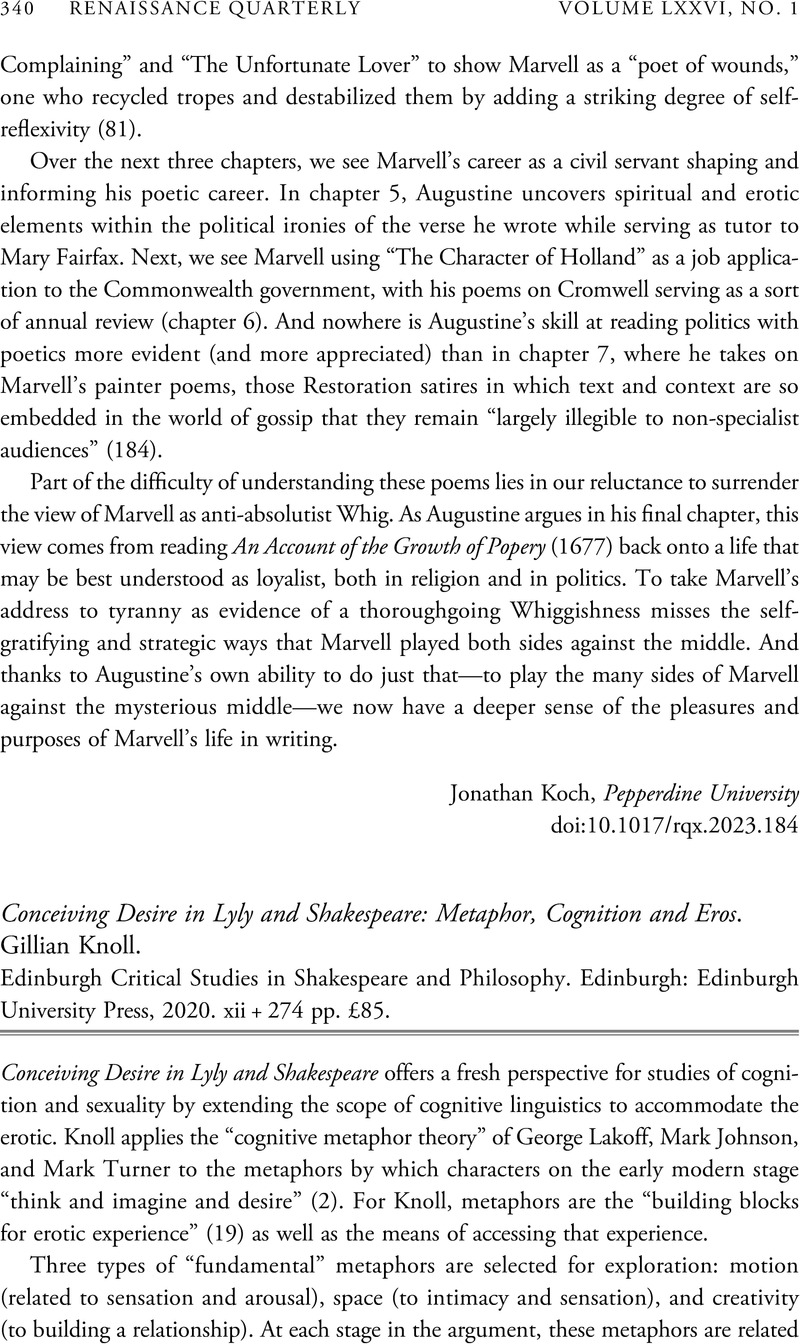No CrossRef data available.
Article contents
Conceiving Desire in Lyly and Shakespeare: Metaphor, Cognition and Eros. Gillian Knoll. Edinburgh Critical Studies in Shakespeare and Philosophy. Edinburgh: Edinburgh University Press, 2020. xii + 274 pp. £85.
Review products
Conceiving Desire in Lyly and Shakespeare: Metaphor, Cognition and Eros. Gillian Knoll. Edinburgh Critical Studies in Shakespeare and Philosophy. Edinburgh: Edinburgh University Press, 2020. xii + 274 pp. £85.
Published online by Cambridge University Press: 17 April 2023
Abstract
An abstract is not available for this content so a preview has been provided. Please use the Get access link above for information on how to access this content.

- Type
- Review
- Information
- Copyright
- Copyright © The Author(s), 2023. Published by the Renaissance Society of America



